Army boost. Part of 1
The middle of September is near 1914.
The Galician operation of the South-Western Front approached the end and the First August Operation of the 1 and 10 Army of the North-Western Front began on the left and right flanks of the Russian Front, respectively. The 2 Army, which had not yet fully recovered from the “Samson” catastrophe, stood passively on the r. Narev.
Polish theater of operations was gradually saturated with troops - its strategic importance was steadily increasing. Warsaw was occupied by a detachment of a general from P. D. Olkhovsky’s infantry (see Who defended Warsaw), who advanced his cavalry to the front of Wloclavsk-Novoradomsk.
The command of the North-Western Front was inclined to leave Warsaw, pulling the left flank of the front under Velsk. The command of the Southwestern Front revolted against this plan. And the headquarters consistently held two meetings - dedicated to solving key strategic issues and held on 9 and 13 in September in the Hill. They decided to regroup to the Middle Vistula. The 2 Army was deployed to Warsaw from the North-Western Front, and the 4-I, and then the 9-I and 5-I armies moved from Ivangorod from the Lower San. In front of the right flank of the South-Western Front in the area of Pinchov - Nov. Korchin - Stopnitsa was nominated by A. V. Novikov’s newly formed equestrian corps.
Even before receiving intelligence data from left-bank groups of cavalry on both fronts, the Headquarters assumed that the Germans could develop an offensive operation on the left bank of the Vistula - in the directions of Warsaw and Ivangorod. This foresight, supported by intelligence data, and then confirmed by reports from the cavalry of both fronts, was fully justified.
After the end of the East Prussian operation, which ended with the encirclement of a part of the forces of the 2 and displacing the 1 of the North-Western Front from East Prussia (see The decisive battle of the First World War. East Prussian operation 1914 of the year. On the balance of power ; The decisive battle of the First World War. East Prussian operation 1914 of the year. The only victory - Gumbinnen? H. 1 ; The decisive battle of the First World War. East Prussian operation 1914 of the year. The only victory - Gumbinnen? H. 2 ; The decisive battle of the First World War. East Prussian operation 1914 of the year. About the transfer of buildings from the West ; The decisive battle of the First World War. East Prussian operation 1914 of the year. About losses. CH 1. North-Western Front; The decisive battle of the First World War. East Prussian operation 1914 of the year. About losses. CH 2. 8 Army; The decisive battle of the First World War. East Prussian operation 1914 of the year. The main reasons for the operational defeat of Russian troops ; The decisive battle of the First World War. East Prussian operation 1914 of the year. Let's sum up), P. von Hindenburg transferred the bulk of his corps to Silesia - launching an offensive towards the Middle Vistula. Purpose - threatening the right flank and rear of the South-Western Front, to assist the Austrians who were defeated in the Battle of Galicia. To the south, from Krakow, the Austrian 1 Army went on the offensive.
09. 09. 1914 The commander-in-chief of the front issued an order to the 4 Army General of Infantry A.E. Evert (as part of the Grenadier, 3 Caucasian and 16 Army Corps and Ural Cossack Division) from September 11 to start movement from San near Ivangorod - and two corps were to be sent to Lublin, and from there they were transported by rail to Ivangorod. At the same time, an order was made to transfer all heavy artillery and pontoon battalions from the 4 to the 5 army — which indicated a clear underestimation by the front command of the upcoming 4 army combat operation on such a serious water barrier as the Visla River. The necessity of the movement of the Ural Cossack Division along the left bank of the Vistula was also indicated.
1. A. E. Evert. Niva. 1914. No. 40. From the author's library
September 10 Commander in Chief Directive No. 1404 set the 4 Army the following tasks: 1) to ensure the right flank and rear of the Southwestern Front in the event of the Germans coming from the r. Narev; 2) to assist the Warsaw Detachment; 3) in the event of the advance of the Germans from the west to attack them on the left bank of the Vistula; 4) “if direct assistance to the armies of the North-Western Front is required, then this is done only upon receipt of the special order of the Supreme Commander”. The directive also stated that if the movement of the German troops to the Vistula in the Ivangorod-Sandomir sector was found during the movement of the army to Ivangorod, the 4 army should work closely with the 9 army, providing the right flank and rear communications of the latter. The fortress of Ivangorod was subordinate to A.E. Evert.
Initially, A.E. Evert planned to locate his corps in the Sedlec area, Garwolin, and Lukov - with the front to the north. Only one of the avant-gardes was planned to push to the left bank of the Vistula - to Magnushev, to ensure the crossing.
To accomplish the third task, A.E. Evert demanded quick guidance on the Vistula of a reliable bridge and asked the superior command of the 1 - 2 pontoon battalion. Moreover, it was relevant in close cooperation with the 9-th army. But to these considerations, the commander in chief replied with a proposal to locate the 4 Army in the Kazimierz, Opole, and Motych areas — without interrupting two railway lines.
Then A.Ye. Evert turned the corps: the Grenadier to Vonvolnitsa and further to the Kazimierz district, the 16-th army in Opole and the 3-th Caucasian Army - to the Motych region.
Despite the petition for the addition of pontoon battalions to his army, A.Ye. Evert asked for the allocation of transfer capacities of commandant Ivangorod.
2. Acting commandant of the Ivangorod fortress, Colonel A.V. Schwartz (in the first row, first right). Niva. 1914. No. 48. From the author's library
The latter replied that the 15 barges, the boats and the steamer had already taken the 9 Army, but there are no pontoon battalions yet. From the headquarters of the 16 front of September, A.E. Evert received a message that bridges would be built by the care of A.V. Schwarz — in Novo-Alexandria and near Golomb; Also, Novo-Alexandria will have 6 steamers and one steam steam with a total carrying capacity of 3000 people.
3. Pontoon bridge over the Vistula. The great war in the images and paintings. Issue 5. From the author's library
4. Steamship pier and bridge on the river. Wisla from Novo-Alexandria. Niva. 1915. No. 9. From the author's library
On September 17, the commander-in-chief proposed to land the troops in Ivangorod and then push them forward, depending on the situation. But on September 19 he ordered the 4 Army to be concentrated on the right bank of the r. Vistula - from the mouth of the river. Vilga to the mouth of the river. Ilzhanka, having firmly secured the crossings at Novo-Alexandria and Kazimierz. During the offensive, the 4 th army should be deployed on the Kozienice, Zvolen, estuary line. Ilzhanka - with direction to the front Opoczno, Skarzysko. From the south along the right bank of the Vistula, units of the 9 Army were pulled up.
The 4 army corps gradually castled along the Vistula to the north, initially turning around for passive defense.
A.E. Evert decided to occupy the following initial position on the left bank: the 3-m Caucasian Corps - in the Kozienice region, Ivangorod; Grenadier and 16 cases - to gain a foothold on the line south of the line of Ivangorod forts, in 8 - 10 km from the crossings. This reliably provided them with enemy artillery fire. On September 18, the commander informed the commander of the Grenadier Corps that his unit would be shipped from Novo-Alexandria. It was ordered to choose, in addition to the bridgehead (bridgehead) ahead of the crossing, the position for the advanced units on the 1 - 2 brigade and instruct the chief of staff and the corps engineer to conduct a reconnaissance of the position, as well as to strengthen the strong points.
On September 20, A.E. Evert recommended that the Grenadier Corps commander speed up the crossing. But after three hours, he was forced, on the instructions of the commander-in-chief, to wire the commcorus: "... to detain the uncrossed whole units on the right bank."
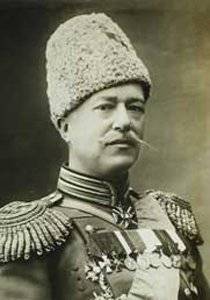
5. The commander of the Grenadier Corps, General of Artillery I. I. Mrozovsky.
The commander ordered the bridge position to be strengthened and stubbornly defended. On September 21, A.E. Evert ordered I.I. Mrozovsky to take over all the ferries from Novo-Alexandria, and use the sappers to build bridgeheads.
September 18 The 16 Army Corps received orders to prepare for crossing from Kazimierz. From September 20, the arriving one after the other three (9, 8 and 3) pontoon battalions were supposed to bridge. But then it was decided to remove the bridge near Kazimierz (by organizing passive defenses on the right bank of the Vistula), and to continue building the bridgehead for the future bridge. The 16-th corps had to prepare, in addition to Kazimierz, other points for the guidance of the pontoon bridge.
The commander of the 16 Corps considered it possible, in the presence of three pontoon battalions, to bring two bridges within 12 hours - one pontoon and the other - mixed.
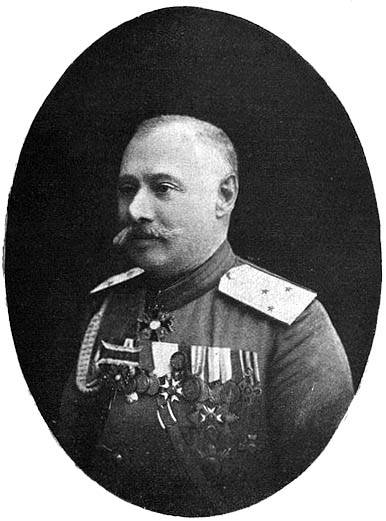
6. The commander of the 16 Army Corps, General of Infantry, P. A. Geisman.
Because the commander-in-chief expressed to the 4 commander-in-chief fear of engaging his corps in private battles, A.Ye. Evert did not make the final decision on preparing bridgeheads on the left bank - refusing the most correct solution in the given situation and limiting himself to making bridge bridge
Major-General S. P. Lebedev, engineer, was in charge of organizing the crossing of the Vistula and the bridgehead fortifications, at the disposal of which the army provided its sapper battalions. And before that, the commander ordered to start collecting boats, logs and boards. The commandant of the Ivangorod fortress was ordered to build two ship bridges at Novo-Alexandria and organize a ferry of 6 steamboats. It was ordered to prepare one bridge near Golomb. But instead of the last A.V. Schwartz built 4 marinas: 1) for the 1 ferry to 50 people or 16 approach; 2) for the ferry to 250 people; 3) for 1 bollards for 250 people and 4) for 3 steamboats for 400 people - just one flight from Golomb could transport 1400 people for 45 minutes.
7. On the banks of the Vistula. Niva. 1915. No. 9. From the author's library
Already 20 September 1 bridge at Novo-Alexandria was completed, and 2 th lay - pedestrian.
By September 23, there was already the 3 bridge (including the railway bridge) in Ivangorod, the 4 aforementioned marinas near Golomb, and the ship and foot bridges near Novo-Alexandria. There were also a ferry at Novo-Alexandria and a pontoon bridge at Kazimierz.
On September 25, the front headquarters ordered the 3 pontoon battalion to be sent to Gura-Kalwaria to the 5 Army.
When 26 of September decided to cross at Pavlovice, a steamer with a ferry was sent there from the fortress and the construction of the bridge was started - the last one was completed on the night of September 29.
They were actively preparing for the crossing of the 4 Army Corps. So, at the request of the command of the 3 Caucasian Corps, September 19, from Kiev, Ivyangorod sent Polyansky floats to 200 - per each engineer company.
8. The commander of the 3 Caucasian Army Corps is General of Artillery V. A. Irmanov, hero of the Kozenitsky battles. Figure Acad. M. Rundaltsev. Chronicle of the 1914 War No. 15. From the author's library.
The officers of the General Staff of the 3 Caucasian Corps began reconnaissance of both banks of the Vistula, and then, together with the corps engineer, and the river bed.
The best places for crossings were: Sverzhe Gurne, at Holendra, at Pavlovice and at Rychivol. All ferries on the river were taken by the Ivangorod fortress, there were few boats (the rest were hidden on the shore), there were no fords. But 5 barges were discovered and used.
Intelligence of the Vistula from Kazimierz to Zakrzheva was organized by the headquarters of the Grenadier Corps. She revealed an insignificant number of available boats and materials for the construction of bridges. The 3 barges discovered by September 17 were shipped to Novo-Alexandria. By September 19, the day of the avant-garde crossing, the grenadier on the left bank, the right bridge near Novo-Alexandria, was only halfway up the river - and the avant-garde regiment was transported by a steam ferry.
And E. Evert insisted on enhancing intelligence. And the 3 Caucasian Corps acted in Kozienice 3 with hundreds of Khoper Cossack regiments. Pedestrian intelligence also operated, and on the left bank there were guard outposts with machine guns.
A reduced German aircraft was captured in the fortress - it was also used for reconnaissance.
Grenadier Corps scooped information about the enemy from expelled to the village. Zhabyanka 4 of hundreds of 14-th Orenburg Cossack regiment, from 14-th cavalry division (cavalry corps of A.V. Novikov) and from 75-th infantry division (from Radom). Parts of the latter reported the appearance of German armored vehicles.
The 16 Corps sent foot reconnaissance with machine guns to the left bank.
The Trans-Baikal Cossack Brigade and the Ural Cossack Division were actively engaged in reconnaissance.
September 22 discovered the approach of three German corps - north, west and south of Radom. The brigade of the 75 Division, which occupied Radom, was ordered, without being carried away by the battle, to retreat to Kozienitsa or Ivangorod, depending on the situation.
On September 24, German patrols approached Ivangorod - a group of M. von Halwitz approached the city as part of the 20 Army and Guards reserve corps. To the north, a group of A. von Mackensen attacked Warsaw, and to the south - a corps of R. von Voirsch and the Austrian 1-i army, supported by the German 11-i army corps.
By September 25 the approach to the front of the 4 Army on the Vistula of three German corps was clearly indicated. Undercover information, military intelligence and a survey of prisoners made it possible to install on the front of the army troops of the 17 and 20 of the army and Guards reserve corps.
From 18 hours 27 September, German artillery began shelling advanced positions and left-bank forts of the fortress. At about 15 hours on the highway to Pakhna Volya, the movement of the enemy's advanced units and infantry columns with artillery was noticed. Around 18 hours, 4 armored vehicles, infantry and cavalry (20 km south-west of Kazimierz) appeared.
By the evening of September 28, the Germans occupied Breznitz, Mozelice-Nizhny and Stashov. Of the last villages, they were soon driven out. The attack on the fortress from the southwest was also repelled. Since September 25, German airplanes bombed Ivangorod daily.
To be continued
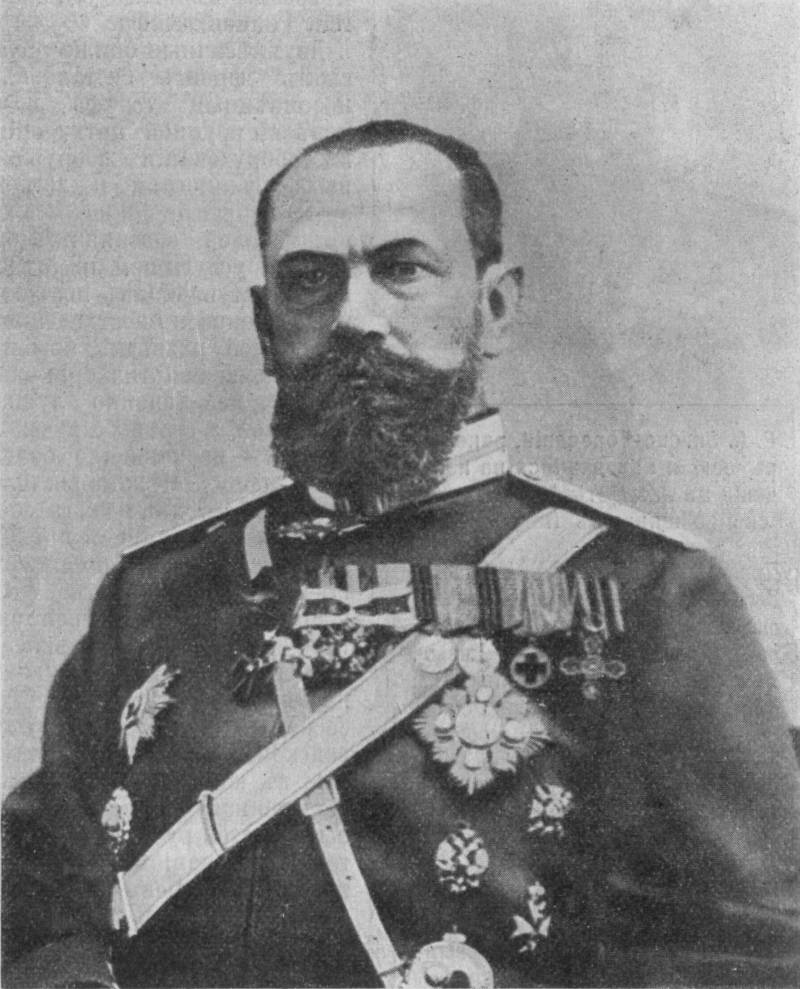
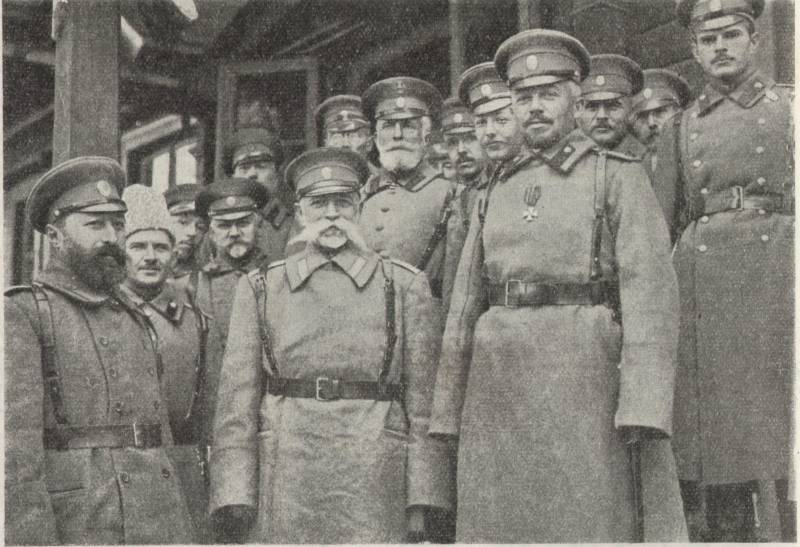
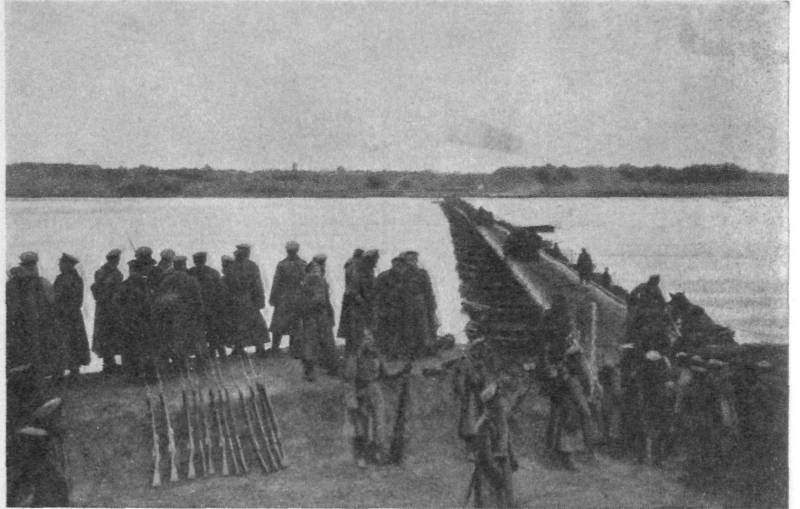

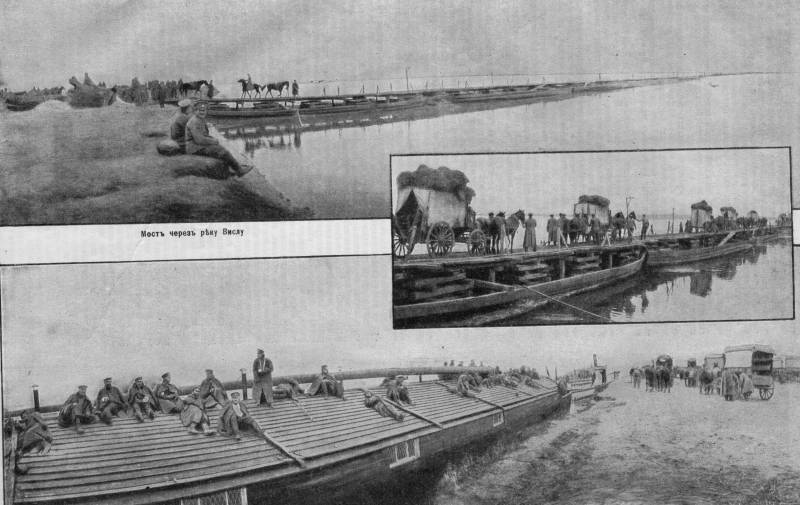
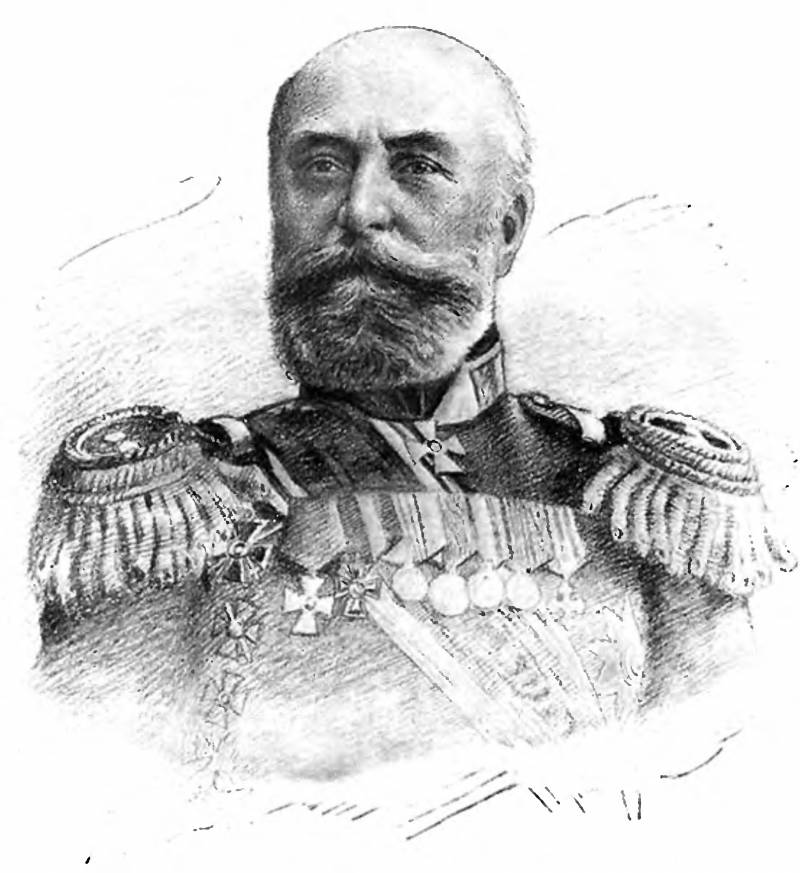
Information